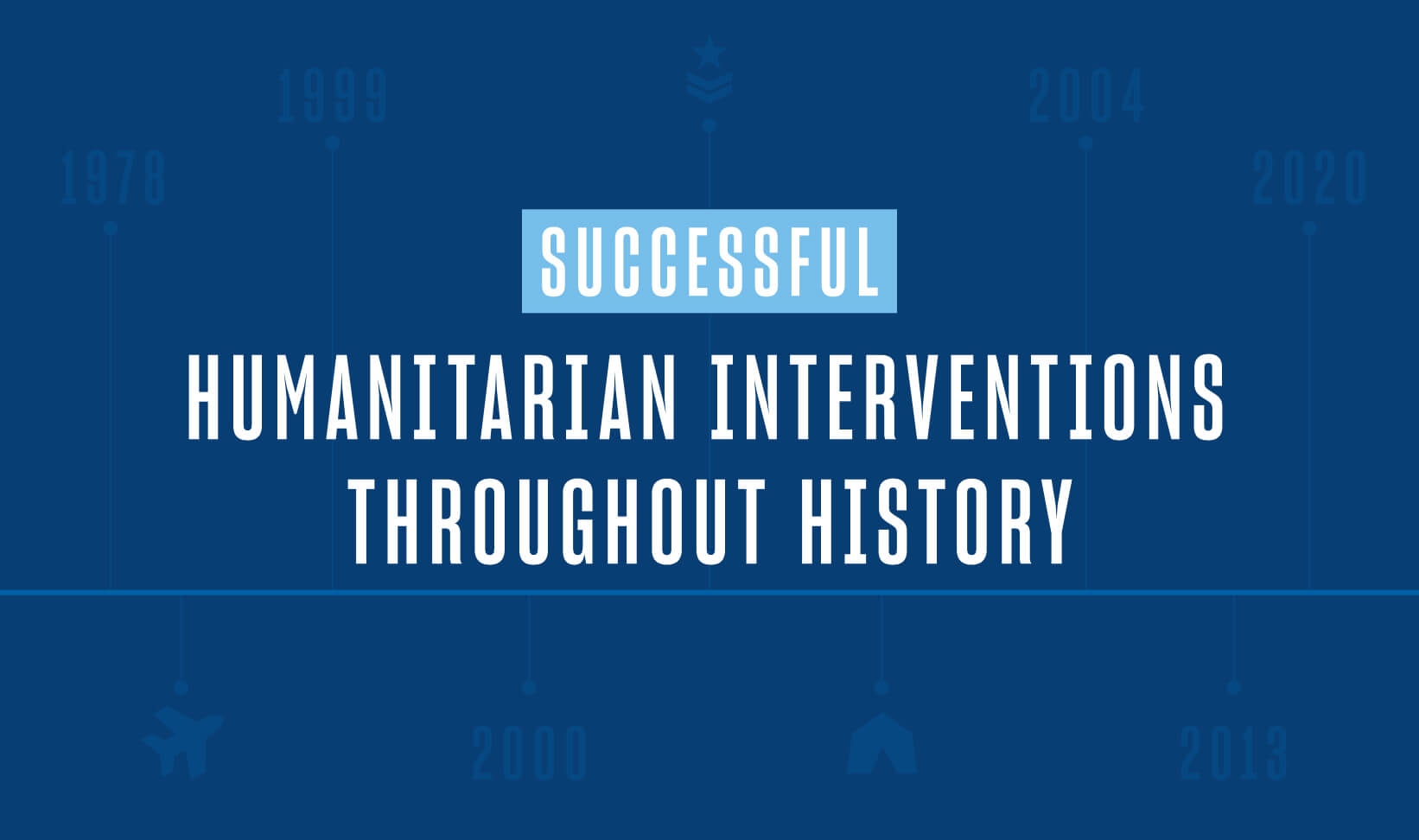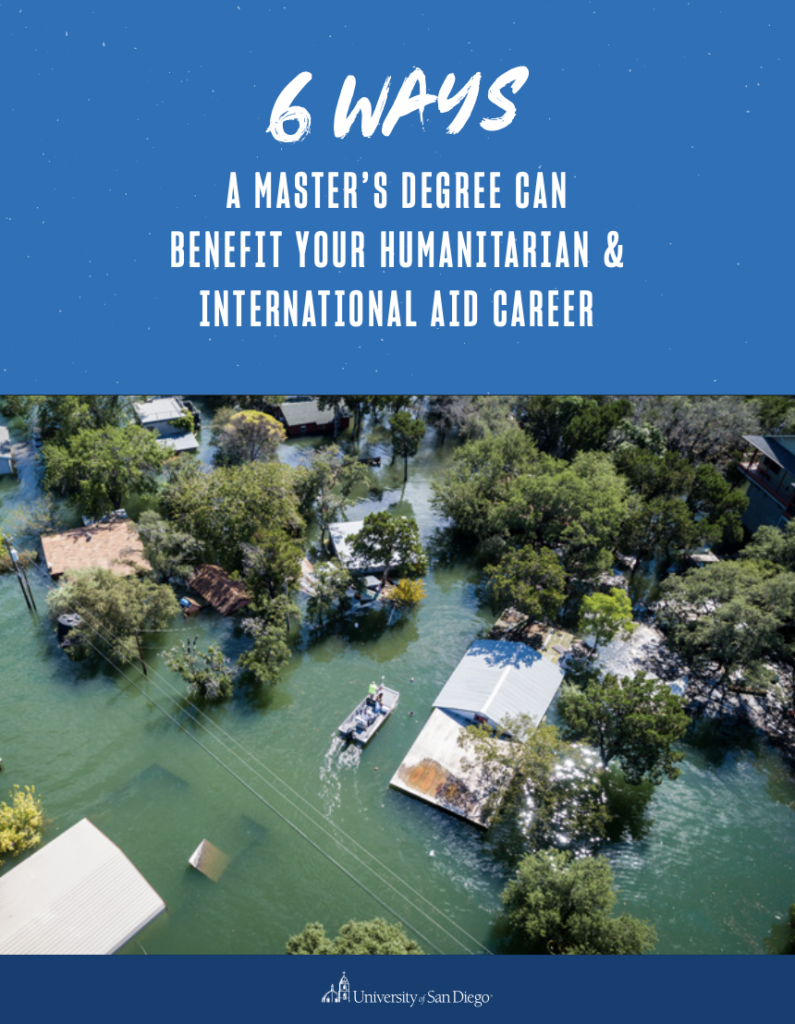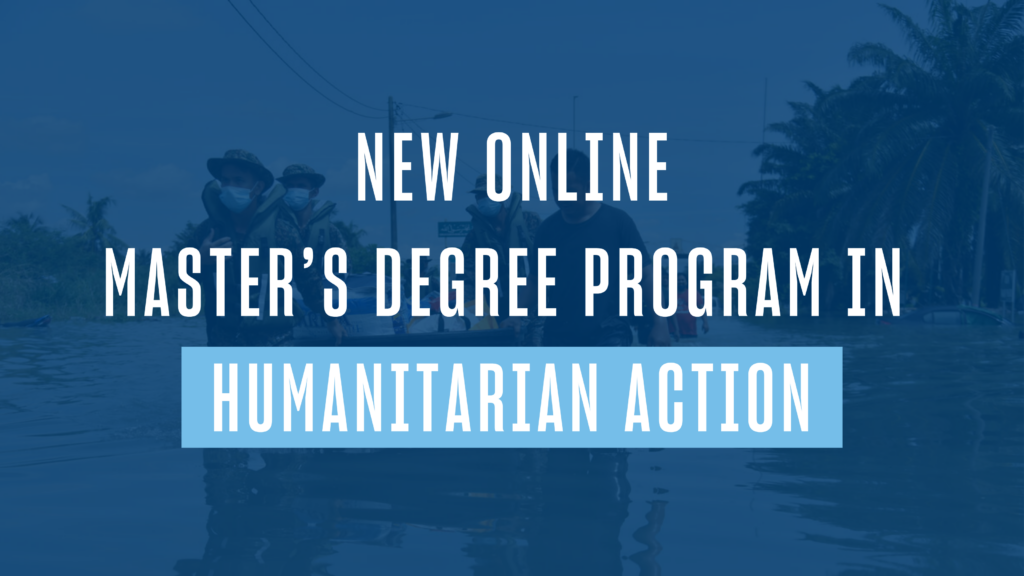The concept and practice of humanitarian intervention has been the subject of ethical, legal and political debates for centuries the world over. While proponents argue that it is necessary to respond to prevent egregious human rights violations and unnecessary suffering, opponents raise concerns about sovereignty, potential abuse of power, and the unintended consequences that military interventions can exact on innocent lives. The legitimacy and legality of humanitarian intervention under international law remain complex issues that continue to be hotly debated within the international community.
Gauging the success of humanitarian intervention is complex, nuanced and dependent on a wide range of factors. This article provides examples of eight humanitarian interventions considered to be successful — though each “success” represents a relative and complexly conditioned outcome.
What Is Humanitarian Intervention?
Humanitarian intervention typically refers to the use of military force or other actions taken by one or more countries or international organizations in another sovereign state in order to alleviate human suffering, protect human rights, or prevent or end large-scale human rights violations. Intervention is considered an extreme response and only precipitated by the targeted state’s failure or inability to end its own people’s suffering. The intervention is often, but not always, carried out without the consent of the targeted state’s government and is justified on ethical and moral grounds, emphasizing the responsibility to protect vulnerable populations. In the event of an uninvited intervention, the sovereignty of the target state is, in theory, considered to have been invalidated by its unwillingness or inability to protect the lives and dignity of its citizens.
In contrast to humanitarian aid, humanitarian interventions typically take the form of military protections or peacekeeping missions, targeted diplomatic pressure, international sanctions or armed campaigns to prevent or halt atrocities like genocide, ethnic cleansing and other crimes against humanity.
An intervention might be considered successful, if, for instance, a significant number of innocent lives are saved; however, it must be acknowledged that there is no way to truly know the extent of the damage that might have occurred had there been no intervention at all.
There have only been a handful of interventions in human history that are considered successful, and even those were achieved at significant cost and carried unintended consequences.
[RELATED] What Makes a Good Humanitarian [+ Important Skills]
Determining the Feasibility of Humanitarian Intervention
Before making the decision to take action, the international community or concerned entities must determine whether the severity of the violations warrants external action. Then, there are myriad factors to consider when determining whether humanitarian intervention is feasible.
Logistically speaking, intervening forces must contend with the following:
- Exactly when, where and how to intervene
- Who should participate and in what capacity
- The origin and availability of resources
- How to measure progress or success
- When to halt all or part of the intervention efforts
Other challenges and considerations involve much less tangible factors:
- Identifying the threshold condition for intervention: Needless to say, establishing a threshold for atrocities is an extremely difficult task in itself. The line between “freedom fighters” and “terrorists,” for instance, is often fuzzy. International Humanitarian Law dictates that states engaging in armed conflict must respond in ways that (a) discriminate between military and civilian targets, and (b) exhibit a proportionality between the response, the threat and the collateral damage to civilians. But countless examples have shown these qualitative markers to be subjectively determined. American political theorist Michael Waltzer considers violations to be sufficiently egregious and worthy of intervention if they “shock the conscience of mankind” (Just and Unjust Wars, 1977). Intervening forces must take into account the nature, scale, cultural context, severity, duration or geographical reach of human suffering, as well as whether the benefit of the intervention itself is worth the potential cost. Moreover, the old adage that the truth is the first casualty of war was never more true than in today’s contested digital landscapes, where state and non-state actors have extended mis- and dis-information campaigns. These can sow enough confusion to prevent consensus from forming or sufficient funds from being allocated.
- Building justifications for taking action: The Just War theory addresses the paradoxical conundrum of using military action to end violence and suffering. The centuries-old theory posits that precipitating circumstances must meet several criteria before opposing sides enter conflict. Criteria include the probability of success, the exhaustion of all other means of mitigation or persuasion and the presence of a competent authority on the part of the intervener. Once engaged, intervening forces must observe the rules of “just conflict” and understand that targeted states have the right to defend themselves.
- Considering moral and ethical challenges: In addition to logistical challenges, intervening parties must contend with a host of moral and ethical issues. These can range from the intentional undermining of another nation’s agency and state sovereignty; the erosion of the citizen-state compact in the target country; the selective justification for intervention in different contexts and the imposition of foreign values (what is considered “wrong”?); whether the concessions made to parties controlling access to affected populations contribute to their immiseration; and whether the intervention is in any way motivated by money, politics, nationalism, bias, prejudice or self-interest. The application of the Hippocratic maxim to “do no harm” in humanitarian interventions sounds simple enough, but can be complicated by bad choices (what if all options do harm, and our choice is merely to minimize it?), imperfect knowledge of outcomes and contested ideas of relevant time frames for measuring success. Humanitarian interventions may prevent harm in the short term while easing pressure on a noxious government in the longer term, making relapse more likely — a phenomenon known as moral hazard. Ultimately, humanitarianism must rely on development and peacebuilding efforts to ensure lasting progress.
[FREE PDF] Learn How a Humanitarian Master’s Degree Can Boost Your Impact and Career
8 Historical Humanitarian Interventions
A handful of humanitarian interventions throughout history have been gauged as successful — though no intervention is perfect. Even effective interventions can carry unintended side effects, some of which unfold over decades. The following are vastly simplified overviews of the most well-known successful humanitarian interventions around the world.
- Operation INTERFET (1999)
The 1999 intervention in East Timor, known as Operation INTERFET, was a multinational peacekeeping effort led by Australia and authorized by the United Nations. It aimed to restore stability and security after violent clashes following East Timor’s vote for independence from Indonesia. Australian forces, alongside international troops, intervened to quell violence, provide humanitarian aid and oversee the transition to independence. This intervention marked a crucial turning point, paving the way for East Timor’s eventual sovereignty and the establishment of the UN-administered East Timor Transitional Administration. - MINUSTAH (2004)
The United Nations Stabilization Mission in Haiti (in French, MINUSTAH) was a Brazilian-led stabilization mission executed in 2004 in response to a violent uprising that preceded the departure of Haitian president Jean-Bertrand Aristide. The mission was authorized by the United Nations Security Council and aimed to stabilize the country, restore order, promote democracy and support Haitian institutions. Brazil and other contributing countries provided military, police and civilian personnel who focused on maintaining security, providing humanitarian assistance and assisting in the establishment of a stable environment for governance and development. Despite facing challenges such as gang violence, political instability and natural disasters, the mission helped restore a semblance of stability and laid the groundwork for subsequent international efforts to support Haiti’s recovery and development. It should be noted that one of the unintentional effects of this mission included the first-time introduction by UN peacekeepers of cholera to the island in 2010. MINUSTAH concluded in 2017, transitioning to the United Nations Mission for Justice Support in Haiti (in French, MINUJUSTH) before a full UN withdrawal from Haiti in 2019. The country has since degenerated into gang violence, begging larger questions of development, dependency and statebuilding.
- Libyan No-Fly Zone (2011)
The Libyan Civil War No-Fly Zone was an international military intervention established in 2011 by the United Nations Security Council, aiming to prevent Libyan leader Muammar Gaddafi’s forces from conducting air operations against civilians and rebels. The no-fly zone was enforced by NATO and Arab coalition partners, prominently France, the UK and the U.S., and involved aerial surveillance, patrols and airstrikes against Gaddafi’s air defenses. The intervention played a pivotal role in weakening Gaddafi’s forces, aiding the rebel advance and ultimately contributing to his downfall and the end of the Libyan Civil War. - MONUC/MONUSCO (2000–present)
The United Nations Organization Stabilization Mission in the Democratic Republic of the Congo (in French, MONUSCO) was established in 2000 (originally MONUC) as a peacekeeping initiative in the wake of the Second Congo War, but subsequently evolved to focus on ongoing regional conflicts. With a mission to protect civilians and support the DRC’s government, MONUSCO aimed to disarm rebel groups, facilitate political elections and foster development. While progress was made in some areas, challenges persisted due to ongoing conflict, political complexities and vast geographical coverage. The mission played a crucial role in addressing security concerns for about a decade, but in the ensuing years, MONUSCO peacekeepers have endured continued protests, attacks and conflicts over resources. - UNAMID (2007–2020)
The African Union – United Nations Hybrid Operation in Darfur (UNAMID) was a joint peacekeeping mission responding to civil war in western Sudan. Authorized by the UN Security Council, it aimed to protect civilians from ethnic cleansing, facilitate the delivery of humanitarian aid and support the Darfur Peace Agreement. UNAMID troops and police were met with violence, logistical obstacles and lack of cooperation with the Sudanese government. While it did contribute to civilian aid and a reduction in violence, the mission faced criticism for limited effectiveness. - Opération Licorne (2002)
Opération Licorne (Unicorn) was a French military intervention in Côte d’Ivoire intended to stabilize the country after a failed coup attempt and ensuing civil unrest. French forces, along with African partners, sought to protect foreign nationals, support peace negotiations and generally maintain order. While initially successful in “freezing” immediate violence, conflict resumed upon France’s departure, and the operation drew international criticism for perceived French interference in Ivorian affairs. The fallout from Opération Licorne makes a case for the importance of a “Triple Nexus” approach to peacebuilding, which engages the humanitarian, development and peace sectors to build toward a synergistic solution, rather than relying only on military might. - Operation Sangaris (2013–2016)
Operation Sangaris was a French military intervention in the Central African Republic (CAR). This intervention is unique in that it was initially requested by CAR president François Bozizé to help quell a violent rebel movement, until Bozizé was ousted and the focus turned to restoring stability, facilitating humanitarian aid and supporting the transitional government. Operation Sangaris helped prevent further atrocities and contributed to more security for civilians, but French forces faced criticism for alleged human rights abuses. - Vietnamese invasion of Cambodia (1978)
This military intervention was aimed at overthrowing the genocidal Khmer Rouge regime led by dictator Pol Pot. The invasion initially helped end the brutal mass killings and atrocities perpetrated by the Khmer Rouge against the Cambodian people. Vietnam’s intervention eventually led to the establishment of a more stable government under the People’s Republic of Kampuchea.
However, the invasion was not without negative consequences, since it (arguably) violated Cambodia’s sovereignty, perpetuated regional tensions and triggered an international backlash. The Vietnamese occupation was met with resistance followed by prolonged conflict, which entangled neighboring countries and strained Vietnam’s relations with the international community. While the intervention curbed immediate horrors, its long-term impact contributed to regional instability and unresolved geopolitical issues.
Humanitarian intervention is a complex, often contested issue, one that requires great objectivity on the part of the interveners. The parties that orchestrate interventions, as well as the international community, must be confident that the actions serve only the interests of the affected state and cause the least harm to its citizens.
If you are drawn to the issues and complexities inherent in humanitarian responses, explore the Master of Science in Humanitarian Action (MSHA) program at the University of San Diego. Offered 100% online, this unique master’s program takes a holistic approach to understanding the world’s most pressing humanitarian issues and leads students in developing practical, innovative solutions for today and tomorrow.
To learn more about the MSHA degree, please visit the program page or connect with an advisor to request more information.




